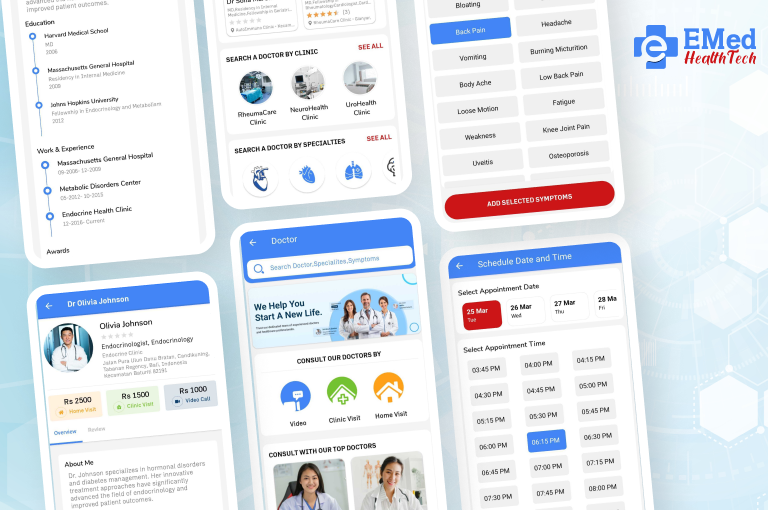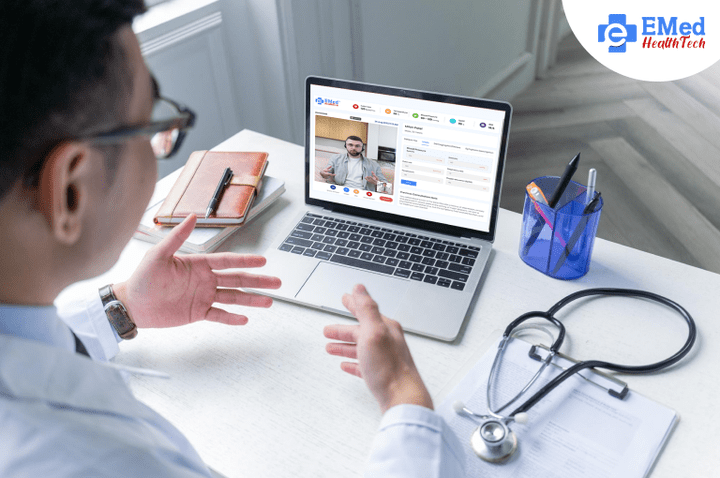Ami Kothari
The outbreak of the Covid-19 pandemic in early 2020 and the resulting lockdowns and restrictions brought in a new set of challenges for the healthcare sector. While several hospitals closed down altogether, in-person consultations became greatly restricted in others to prevent the spread of the virus.
Many rightly termed telemedicine as the “silver lining of the pandemic” owing to its widespread acceptance as a means to continue the delivery of essential healthcare services around the globe. While digital health technologies have been gaining momentum over the past few years, they have become mainstream, with Telemedicine app development emerging as lifesavers to thousands of patients worldwide. Nowadays Telemedicine becomes a must for the digital healthcare ecosystem.
What is a Telemedicine App?
Telemedicine apps help patients to connect with healthcare professionals remotely with the help of advanced digital technologies. While you might think that these are useful only for remote consultations between a patient and their doctor, in reality, these applications can do a lot more. The wide range of services accessible from telemedicine apps includes virtual care and treatment, patient monitoring, remote counseling and therapy, follow-up, medicine order renewals, and so on.
Besides being more convenient for patients, health consultations done via telemedicine apps are much quicker. Patients do not have to travel long distances or wait for hours to meet their doctor — they can get expert medical advice and treatment right from the comfort of their homes.
Who Can Benefit from Telemedicine Apps?
Before you dive into Telemedicine application development, you need to first identify the different user categories of the application. With the adoption of Telemedicine applications, every healthcare user can have benefits. Within the telemedicine app platform, you have the following users:
Telemedicine for Patients – They are users with permission to book online consultations with a doctor.
Telemedicine for Doctors – Doctors should have the features available to view patients’ profiles, conduct online consultations with patients, schedule appointments, and request diagnostic reports.
Telemedicine for Lab Technicians – These users need permission to view and process lab test requests and share lab reports with doctors and patients.
Telemedicine for Admin – These are users with permission to assign sub-admin roles, and security levels, and perform other administrative tasks within the app.
Types of Telemedicine Apps
Telemedicine apps can be of multiple types, each offering a select range of services. The major types of telemedicine apps offered by Telemedicine app developers include the following:
Remote monitoring Telemedicine apps: Remote monitoring telehealth apps are used to monitor the health of patients suffering from chronic diseases remotely. These have attained popularity due to several benefits like lower costs, continuous and efficient monitoring, and high patient satisfaction. Patient monitoring is usually done using smart devices such as health sensors and wearables.
Store-and-forward Telemedicine apps: Store-and-forward telemedicine apps deal with collecting and forwarding patient information to the required specialists. These apps enable medical practitioners to store patient data, including medical history, test reports, imagery, etc., and share them with other experts. Medical fields like radiology, pathology, dermatology, etc., usually engage in this practice.
Real-time Interaction Telemedicine apps: These telehealth apps enable patients and doctors to interact in real-time from remote locations. This can be achieved by functions like phone consultations or video calling facilities. Like face-to-face appointments, patients can inform the doctor about their medical history and symptoms, based on which the medical professional can guide them with the right advice.
Why Would You Want to Build a Telemedicine App?
The adoption of telemedicine in India has exploded over the last two years of the pandemic. Telemedicine apps have seen a giant leap of 35% in monthly active users from 2019 to 2020. The telemedicine market is booming, and this trend is likely to continue. The global telemedicine market is expected to reach a value of 460 billion U.S. dollars by 2030. Also, the government of India makes efforts in promoting Telemedicine and set out the budget for Telemedicine in 2022-2023
If you run a healthcare business and aren’t using a telehealth app, you could be missing out on opportunities. Here are a few reasons you should opt for telemedicine application development:
It is convenient: Using a telemedicine app makes it easier for patients to schedule an appointment with a doctor without going through the hassle of visiting faraway hospitals and waiting long hours for their turn. Remote consultations are also quicker and, in most cases, just as effective as in-person consultations.
Saves time: Delays are inevitable when it comes to in-person appointments – the patient can get stuck in traffic, or the doctor may have an emergency case. Remote consulting via telemedicine apps save you from such unforeseen situations, thereby saving time on both ends.
Easier to maintain patient records: With telehealth apps, storing and viewing the medical records of patients becomes much easier. Doctors across different departments can quickly access the necessary documents and paperwork from the app, saving time and ensuring a better treatment process. Moreover, the app makes it easier for patients to upload and share their medical documents with their doctors without leaving their homes for an online doctor consultation app.
More economical: Telemedicine apps enable patients to avail treatment while avoiding transport and other associated costs. This makes remote consultations more cost-effective. Hospitals and independent medical professionals can also benefit by saving on service and maintenance costs.
Steps to Build a Telemedicine App
If you want to build a healthcare app, it’s best to reach out to a Telemedicine app development company with proven expertise. But before that, there are some steps you need to follow:
Step 1: Identify the target audience for your app
Step 2: Determine the type and purpose of the app
Step 3: Decide on the essential features and functionalities
Step 4: Calculate an estimated budget for your app
Step 5: Get the app developed by a team of professionals
The final development process is crucial — you need to have proper planning when it comes to the development platform, UX/UI design, programming language, etc. This will ensure you have a high-quality application.
Key Features That Your Telemedicine App Should Have
All telemedicine apps need to have dedicated patient, doctor, and admin panels. Below are some standard features that you need to include to make your app successful.
User dashboard: Patients and doctors can view and update information and access all other features through the dashboard.
Instant notifications: Real-time notifications to inform users about upcoming appointments, as well as rescheduling and cancellations.
Video, chat, and voice communication: Multiple modes of communication, including voice, video, and chat, help make the consultation and follow-up process more efficient.
Appointment history: Users can view their appointment history as and when needed.
Electronic health records: This feature keeps all patient data organized, helping faster retrieval during treatment.
End-to-end encryption: End-to-end encryption ensures the safety of confidential patient records.
Final Words
A telemedicine app can make high-quality healthcare services accessible to patients residing in far-off locations. And for healthcare organizations, this can bring in better profits. But, as the success of your app depends on its quality, make sure you go for only the best Telemedicine app development services.
At EMed HealthTech, we provide best-in-class telemedicine app development solutions to healthcare businesses around the world. With a strong focus on quality, we design effective telehealth apps customized to your specific requirements. Want to build an efficient app to boost your healthcare business? Get in touch with us today!
Related posts

Telemedicine
How to Choose the Best Telemedicine App Development Company in the U.S.
Introduction The demand for telemedicine apps in the U.S. is at an all-time high, with healthcare providers rapidly adopting digital solutions to offer remote consultations and improve patient care. Choosing the right telemedicine app development company in the U.S. is crucial for ensuring seamless functionality, compliance with healthcare regulations, and a superior user experience. In […]
Read more
Telemedicine
Telemedicine in 2025: Top Mobile App Development Trends Shaping the Future of Healthcare
As we move into 2025, telemedicine is emerging as a key player in healthcare innovation. The rapid evolution of telemedicine app development redefines patient care and makes healthcare more accessible, flexible, and efficient.
Read more
Telemedicine
The Future of Telemedicine Platform: Trends to Watch in 2025
Telemedicine has rapidly become one of the most revolutionary aspects of modern healthcare. With its role in medical services expanding each year, the future of telemedicine is filled with incredible potential.
Read more







